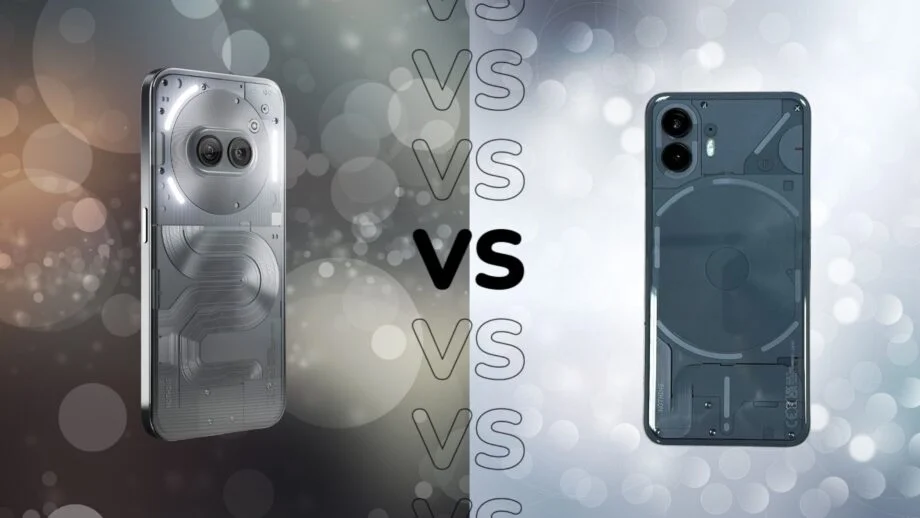In the fast-paced world of smartphone releases, Nothing has been making waves with its unique designs and competitive pricing. But their latest offering, the Nothing Phone 2a Plus, has left tech enthusiasts scratching their heads. Is it truly an upgrade from its predecessor, the Phone 2a, or just a clever marketing ploy? Let’s dive into the nitty-gritty and see if this new device is worth your hard-earned cash or if it’s, well… nothing special.
Design: Déjà Vu All Over Again
At first glance, you might think you’re seeing double. The Phone 2a Plus is practically a carbon copy of the Phone 2a, sporting the same dimensions, weight, and overall design. The only noticeable difference is a slightly glossier finish on the internal coiling, giving it a more premium look. But don’t be fooled – it’s still rocking a plastic back, just like its older sibling. Talk about a case of mistaken identity!
Display and Audio: Twins Separated at Birth
If you were hoping for a display upgrade, prepare to be disappointed. Both phones feature identical 6.7-inch AMOLED screens with 120Hz refresh rates and Gorilla Glass 5 protection. While the display quality is decent, it’s a bit of a letdown considering some competitors in this price range are offering curved panels and higher resolution screens. As for audio, both devices sport the same stereo speaker setup. It seems Nothing decided that if it ain’t broke, don’t fix it – but we can’t help feeling they could have at least tried to tinker with it a little.
Performance: A Slight Edge, But Is It Enough?
The Phone 2a Plus does bring something new to the table with its MediaTek Dimensity 7350 Pro chipset, touted to be 20% faster than the Dimensity 7200 Pro found in the Phone 2a. However, in real-world usage, the difference is barely noticeable. Both phones handle daily tasks and gaming with similar ease, leaving us wondering if this “upgrade” is more marketing speak than actual improvement.
Cameras: Same Hardware, Different Software
Here’s where things get interesting – and a bit confusing. Both phones sport the same 50MP main and ultra-wide sensors on the rear, producing nearly identical results. The Phone 2a Plus does get a bump to a 50MP selfie camera (up from 32MP on the Phone 2a), but oddly enough, it seems to produce less impressive results, with washed-out colors and grainy images. It looks like Nothing still has some work to do in the camera optimization department.
Battery and Charging: A Small Step Forward
Both phones pack a 5000mAh battery, offering similar screen-on times of around 7 hours. The Phone 2a Plus does edge out its predecessor with 50W fast charging compared to 45W, but the real-world difference is negligible – we’re talking about saving maybe 5 minutes of charging time. The addition of 5W reverse wired charging on the Plus model is nice, but hardly a game-changer.
Software: A Touch of AI, But Not Much Else
Both devices run on Android 14-based Nothing OS, with the Phone 2a Plus getting a slight edge with version 2.6 (compared to 2.5 on the Phone 2a). The Plus model also introduces an AI News Reporter widget, but with a limit of 8 story summaries per day, it feels more like a gimmick than a useful feature.
The Verdict: Much Ado About Nothing?
When all is said and done, the Nothing Phone 2a Plus feels less like a true upgrade and more like a slightly shinier version of the Phone 2a. The minimal improvements in performance, charging speed, and software features don’t quite justify the price jump, especially when you consider that competitors are offering more substantial upgrades in this price range.
If you’re in the market for a new phone and considering the Nothing lineup, you might be better off sticking with the original Phone 2a and putting the price difference towards a nice case or some quality accessories. Alternatively, it might be worth exploring other options in this price segment that offer more significant improvements over their predecessors.
In the end, the Nothing Phone 2a Plus proves that sometimes, the grass isn’t always greener on the other side – even if it’s a bit shinier. It’s a reminder that in the world of tech, true innovation is about more than just incremental changes.
